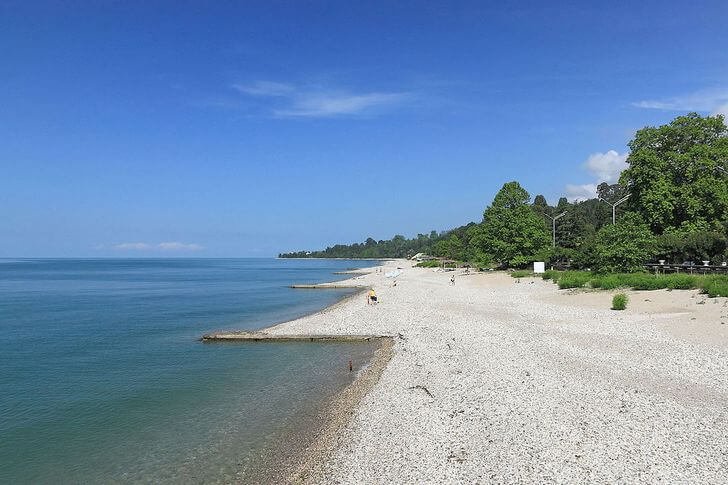The small resort town of New Athos has been widely known since Soviet times. It is spread among fragrant subtropical groves surrounded by a ring of wooded hills. The history of this place began in the first centuries of our era, when the flourishing ancient city of Anakopia was the largest and most important center of the entire region.
In the 20th century, New Athos continued to develop as a resort area and gradually gained all-Union fame. Of course, after the unrest of the 1990s and 2000s, its fame and popularity faded, but local hotels and resorts are still happy with tourists, and historical and natural attractions have not lost their attractiveness, although some of them are in a slightly neglected state.
What to see and where to go in New Athos?
The most interesting and beautiful places for walking. Photos and a short description.
- New Athos Monastery
- Iverskaya mountain
- Anakopia fortress
- Seaside park
- Temple of Simon the Zealot
- Cave of Simon the Zealot
- Museum of the Abkhazian Kingdom
- Memorial Museum of Military Glory
- Stalin's dacha in New Athos
- Station Psyrtsha
- Psyrtskhinskaya Tower
- Gorge Three boilers
- New Athos cave
- New Athos waterfall
- The beaches of New Athos
New Athos Monastery
The New Athos monastery is one of the most famous in the Caucasus, until 1917 it played the role of the main spiritual center of the region. It was founded by monks who came from the Greek Old Athos. Two years after the formation of the community, the Russian-Turkish war began and the Turks, who invaded the Caucasus, plundered the monastery. The restoration, which began in 1880, lasted a couple of decades with the personal participation of Alexander III.
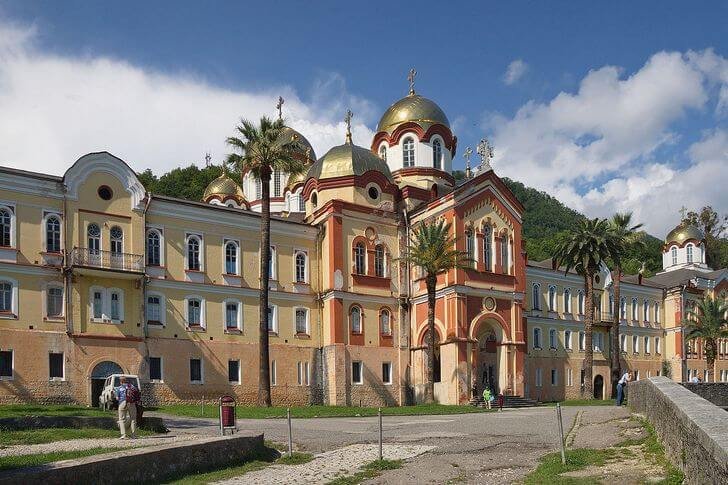
Iverskaya mountain
A mountain 344 meters high, on top of which in ancient times was the capital of the Abkhazian kingdom, and now the ruins of the Anakopia fortress. It is under the Iverskaya mountain that the famous New Athos cave is located. From the highest point you can see the Black Sea coast from Sukhum to Pitsunda. Despite such a modest size, the path to the top along the serpentine road will take at least an hour.

Anakopia fortress
A defensive structure of the 4th-5th centuries, which survived many attacks over such a long period. During the Early Middle Ages, it was a whole fortified city; from the 8th century, the rulers of the Abkhazian kingdom settled here. The building is well preserved, given its considerable age. In 2008, an observation deck was equipped in the restored watchtower and the hiking trail was put in order.

seaside park
Seaside Park was destroyed by the monks in 1880. First, the inhabitants of the monastery organized ponds here, where they began to breed fish for their own needs. After visiting these places by the royal family in 1910, it officially began to be considered a recreational area. There is a chapel in the southeastern part of the park, several sculptures of the Soviet period are scattered around the territory, black and white swans are found in the lake, spread among cypresses and palm trees.
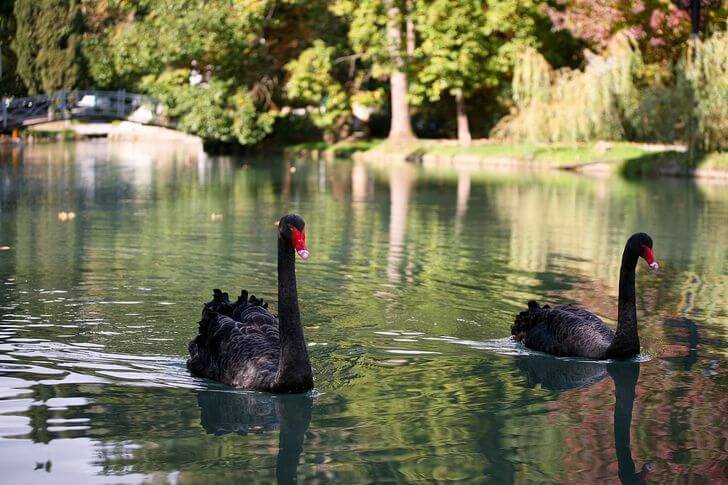
Temple of Simon the Zealot
The temple was built during the heyday of the Abkhazian kingdom in the 9th-10th centuries; it is a unique monument of church architecture, formed under the direct influence of the Byzantine style. According to legend, in the lands of Abkhazia in the 1st century, the Apostle Simon Kananit was martyred by the Romans. Several centuries later, a church was built on the site of his supposed burial. The temple was repeatedly destroyed, but each time it was restored.
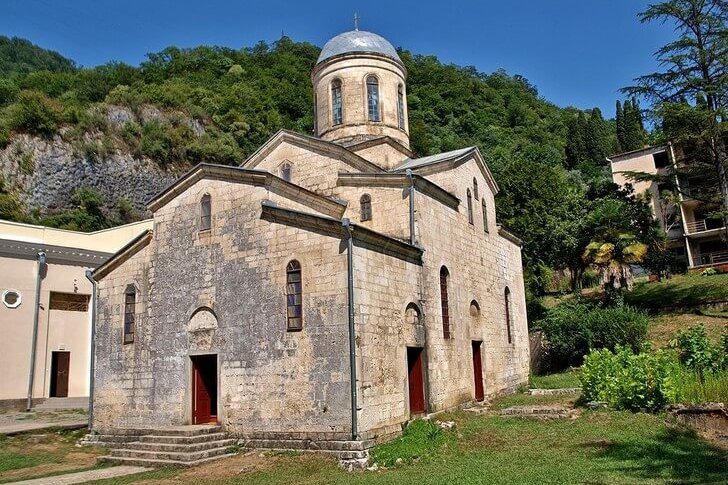
Cave of Simon the Zealot
Today the cave is one of the points of religious pilgrimage. In the 1st century AD, the apostle Simon the Zealot lived in it for two years until he was captured by the Roman legionnaires. In the 19th century, the grotto was consecrated and turned into a chapel, which attracted even more pilgrims here. The cave is located on the territory of the Psyrtskhinsky Reserve, on the way to it there is a holy spring where you can draw water.
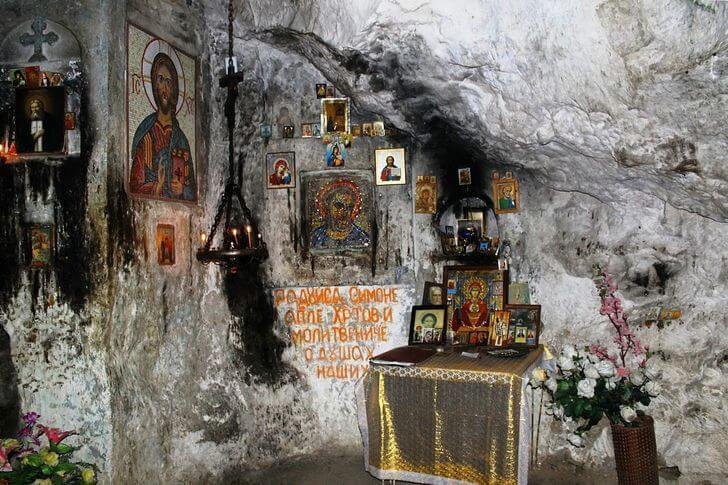
Museum of the Abkhazian Kingdom
The museum was opened in 2010 as part of the New Athos Historical and Cultural Reserve "Anakopia". A small exposition is a collection of household items and art, paleontological and archaeological finds, weapons, products of local artisans, maps and documents belonging to different historical eras. The earliest exhibits date back to the 7th-8th centuries.
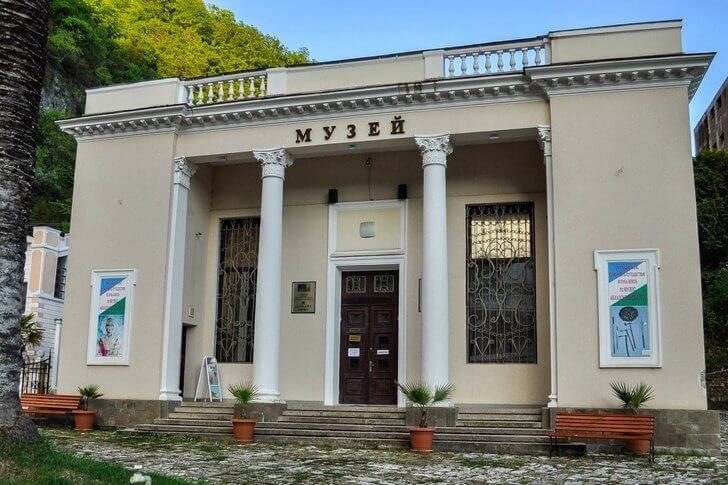
Memorial Museum of Military Glory
The museum collection is dedicated to the memory of those killed in the Georgian-Abkhaz war of 1992–93. The shape of the building resembles a mound, on top of which there is a small belfry. The exposition consists of photographs of people, books and documents. Anyone can visit the institution for free, but you need to adjust the visit to a peculiar work schedule, since the museum is not open every day.
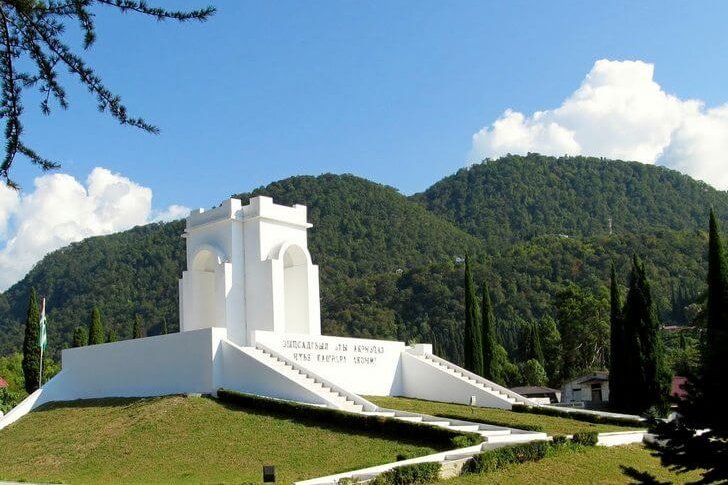
Stalin's dacha in New Athos
The former residence of the Soviet leader (in total, several dachas were built for him on the territory of Abkhazia), which today can be considered a museum, although little of the original furnishings has been preserved inside. It is known that Stalin stayed here several times in the period 1947-1953, that is, already at the end of his life. Interestingly, in the 1990s, the dacha was used as an elite hotel where political figures settled.
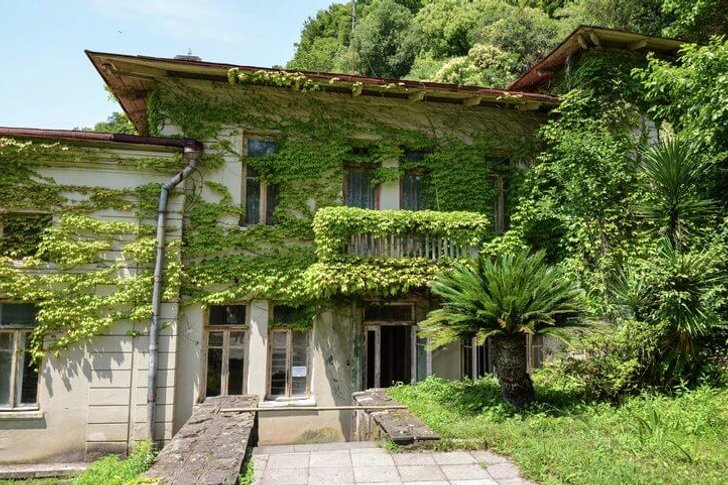
Station Psyrtsha
A small platform of the Abkhazian railway, first of all, is interesting for its unusual architecture. The station pavilion is made in the form of a rectangular canopy supported by columns, located above the glazed part. The roof and openings are decorated with fancy ornaments. The passenger platform is decorated with forged lanterns and a fence. Psyrtsha stands on the bank of a small picturesque backwater.
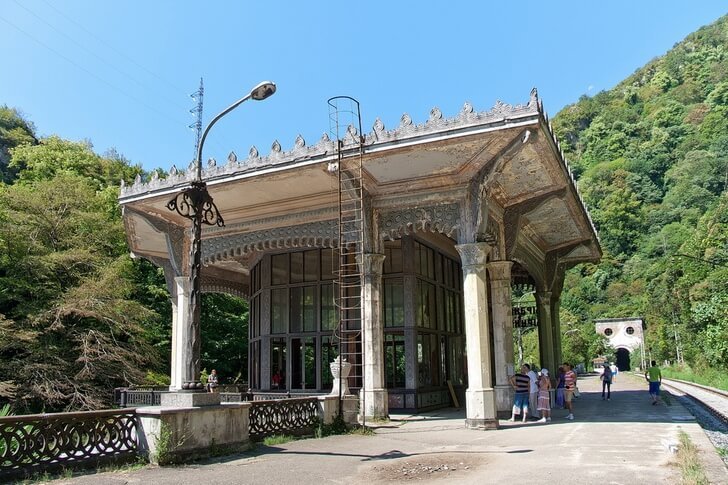
Psyrtskhinskaya Tower
The tower is part of the destroyed defensive fortifications that protected the Abkhazian kingdom from the sea. Presumably, the building was erected in the 11th-12th centuries. In the 19th century, a hotel for wealthy pilgrims was added to the tower (where Chekhov and Paustovsky stayed), in the 20th century it became part of the Abkhazia sanatorium complex. Only the original walls remained of the building, the roof was replaced during the restoration.
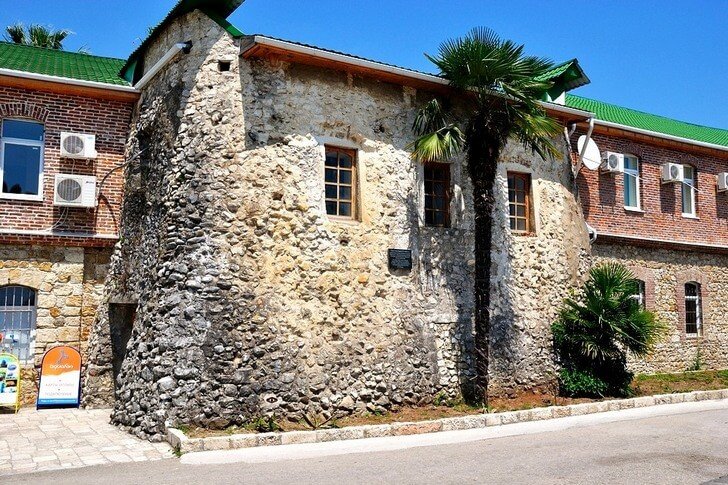
Gorge "Three boilers"
"Three boilers" - these are three reservoirs of karst origin, filled with water from the Psyrtskha River. The lake surface has an amazing color of emerald shade, which fades only during the rainy season and during the spring flood. Even in the hottest weather, it is cool and fresh in the gorge, and the water is very cold, but there are still many who want to swim here. "Three boilers" is one of the most picturesque natural attractions in the vicinity of New Athos.

New Athos cave
The abyss in the bowels of the Iverskaya Mountain has been known since time immemorial, but the locals were afraid to look into this place, until in 1961 a 16-year-old guy descended to a depth of 35 meters, who later became a famous Abkhaz speleologist. Today, the New Athos Cave is a popular tourist attraction. It is a real underground kingdom, consisting of nine halls-palaces with fabulous stalactites and stalagmites.
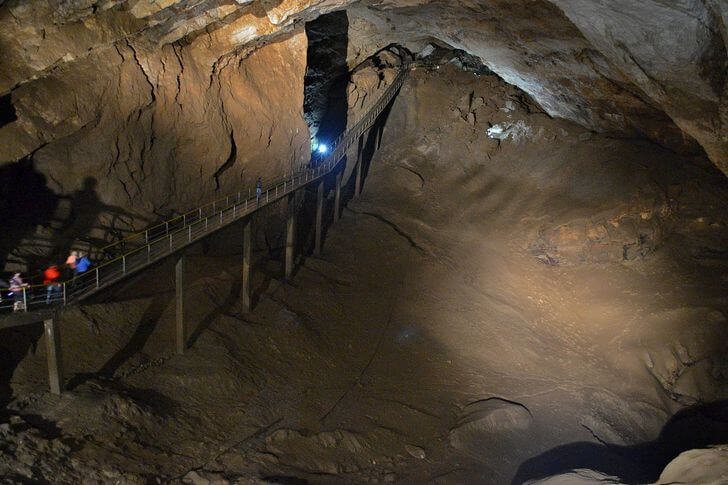
New Athos waterfall
The water cascade is a man-made structure erected by the monks in 1882 for household needs. With her help, the brothers supported the irrigation system of the gardens. The impressive waterfall is 8 meters high and 20 meters wide. Its jets rush down with a roar into a reservoir located at the foot. Nearby is a staircase that leads to the Psyrtsha railway platform.

The beaches of New Athos
Almost all the beaches of New Athos are covered with pebbles of various sizes, in some places there are sand impurities. Bathing areas are surrounded by eucalyptus and pine groves, which creates a unique climate and atmosphere here. It should be noted that most beaches do not have any infrastructure; only resorts and hotels have equipped ones. On them you can rent a sun lounger and stay on the beach in comfort.
